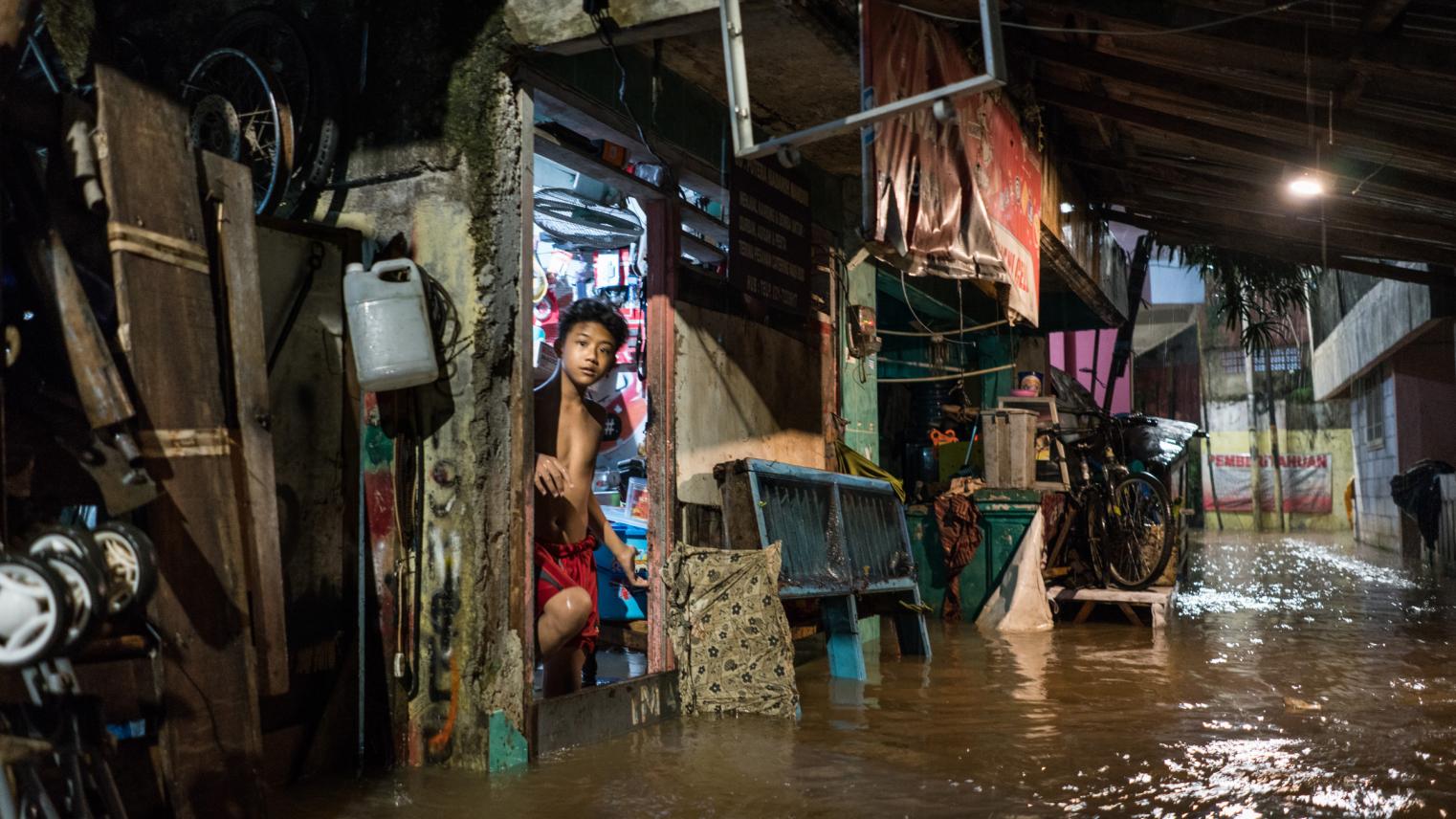Indonesia’s history of natural disasters shows that impacts can be frequent and severe, threatening both lives and economic development. The 2004 Aceh earthquake and tsunami caused economic losses of IDR 51.4 trillion (USD 3.5 billion), far exceeding the 3-10 trillion IDR available in the disaster reserve fund (APBN). The Indonesian Ministry of Finance has therefore developed a disaster management risk financing strategy, Pembiayaan dan Asuransi Risiko Bencana (PARB), including a Disaster Pooling Fund (PFB), to ensure that financing can be provided to protect state finances, government assets and the community.
But how can we be sure that the financial resources available to PARB are adequate? In order to answer this question, we need a multi-disciplinary approach that can help us understand not only the natural hazards that beset Indonesia, but also reliably estimate potential impacts and economic loss.
The inaugural ANU Indonesia Institute Interdisciplinary Event brings together experts from Institut Technologi Bandung, the ANU School of Earth Sciences and Arndt-Corden Department of Economics to discuss progress in this area. Presentations will focus on major improvements in predicting earthquakes and other hazards, as well as development of exposure data that can help us forecast natural disaster impacts and costs. Join us for afternoon tea and an interactive discussion with panelists.
Speakers:
- Dr Riantini Virtriana, Bandung Institute of Technology, Indonesia - "Exposure data analysis for damage and loss calculation of risk assessment"
Riantini Virtriana is an Associate Professor of GIS and Spatial Database at the Geodesy and Geomatics Department, and Manager of Research, Innovation, and Community Services, at Faculty of Earth Sciences and Technology (FEST) at Bandung Institute of Technology, Indonesia.
Dr Virtianan holds a doctorate degree in Geodesy and Geomatics. She started her research career in 2010 within the fields of GIS, Spatial Database, and Remote Sensing as a scientific and research assistant at Remote Sensing and Geographic Information Science Research Group, Bandung Institute of Technology.
- Professor Phil Cummins, ANU - "'Black Swans' and seismic risk in Indonesia"
'Black Swans' and seismic risk in Indonesia
The 21st century began with a remarkable series of great earthquakes occurring off Sumatra, starting with the 2004 Great Sumatra Earthquake and Indian Ocean Tsunami that caused over 220,00 deaths. While subsequent earthquakes were deadly, none resulted in fatalities on the massive scale of the 2004 event. Can we expect this trend to continue?
Following the 20th century's explosion in global population, Indonesia's population continues to increase at 1% annually. Urbanisation is accelerating, and chances of a large earthquake directly striking an urban population increase commensurately These urban populations are subject to many factors that increase their vulnerability, including: typical residential construction that is non-engineered with poor-quality masonry; many tall buildings that lack adequate earthquake-specific design; basins of thick, soft sediments that exacerbate ground motions and may be prone to liquefaction.
Professor Cummins will present a combination of modeling results, compilations of historical accounts and analyses of recent geophysical data that suggest that, although some earthquake-prone areas of Indonesia may currently be in a period of quiescence, the potential for destructive earthquakes is high, and that when such events occur their impacts are likely to be severe.
Phil R. Cummins received his PhD in Geophysics form University California Berkeley in 1988 and worked as a postdoctoral and research fellow at ANU until 1996, when he moved to the Japan Center for Marine-Earth Science and Technology (JAMSTEC). After leading a geodynamics research unit at JAMSTEC, in 2001 he took up a position leading earthquake and tsunami hazard research at Geoscience Australia (GA). In 2011, he accepted a joint appointment between GA and ANU as Professor Natural Hazards, where he combines teaching and research in natural hazards at ANU with technical application of earthquake and tsunami science at GA.
- Professor Budy P. Resosudarmo, ANU - "Is universal disaster index-based insurance feasible for Indonesia?"
Is universal disaster index-based insurance feasible for Indonesia?
Located within the Pacific Basin's 'Ring of Fire', Indonesia is among the world's most disaster-prone nations. Earthquakes, volcanic eruptions, landslides, floods, and other significant natural phenomena are commonplace. On average, the country grapples with three to four major natural disasters each year, leading to roughly 700 fatalities. Furthermore, multiple events often unfold simultaneously, resulting in significant socioeconomic repercussions, which can sometimes reach as high as IDR 80 trillion (USD5.6 billion) annually (BNPB, 2016). Given these challenges, it's crucial for Indonesia to establish a mechanism that shields its population from the frequent natural hazards. A promising approach is the disaster index-based insurance, a system that offers payouts based on a pre-determined index (like rainfall levels or earthquake magnitudes) to compensate for asset and investment losses stemming from weather events and catastrophes. Against this backdrop, our research delves into the demand for such index-based insurance, spotlighting case studies in Jakarta, Lombok, and Sumba. We also assess the potential of rolling out a comprehensive disaster index-based insurance framework in Indonesia.
Budy P. Resosudarmo is a professor at the Arndt-Corden Department of Economics, serving as the Head of the ANU Indonesia Project at the Crawford School of Public Policy, Australian National University (ANU). His primary research interests span development economics, environmental and resource economics, and public policy. Resosudarmo has spent considerable time exploring the interconnections between natural disasters, environmental conditions, local economies, household incomes, and human development. He also investigates the political economy surrounding environmental policies and resource utilization. His research methodologies include, among others, impact evaluation and spatial and inter-regional modelling techniques.
